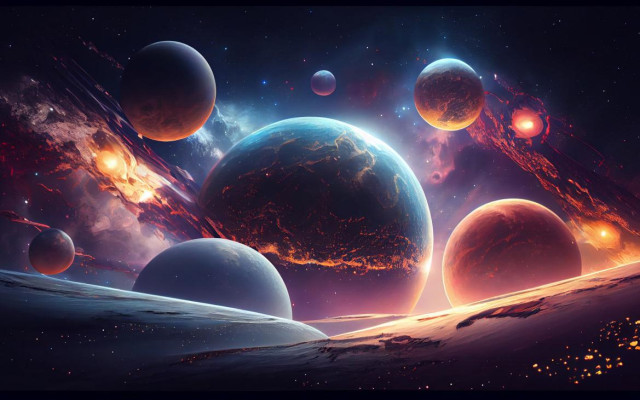Astronomers now know of more than 5,000 planets outside our solar system. This list is constantly growing. Their study is important for understanding how the universe formed and expanded, as well as for answering the question of whether we are alone in it.
Many planets are orphaned without a parent star
As planets move away from their parent stars, they are flung out of the star system and start "wandering" around the Universe.
To detect "outcasts", a separate method was developed - gravitational micro-lensing. As such planets travel through the galaxy, they inevitably pass through the line of sight of one or more stars. At this point, the planet's gravity temporarily bends, distorts and amplifies the light from one of these stars.
Ultrahot planets are the easiest to spot
Astronomers often detect them using the transit method. This is the name given to the measurement of the periodic dimming of the host star due to the fact that planets in orbit regularly block its light.
How humanity would act if it received a signal from aliens
After the disappearance of planet-forming gas, dusty remnants remain
When a star is born, a disk of dust and gas forms around it. Grains of dust stick together in the disk under the influence of gravity and form a solid core. Then, in about 10 million years, a full-fledged planet is formed.
Scientists have long known that star systems emit gas within 10 to 20 million years after star formation. In 2023, researchers learned that dust remains for hundreds of millions of years. In addition, scientists think that early solar systems were also rich in dust. However, this remains to be tested.
Alien civilizations are coming
Scientists often speculate about what advanced alien civilizations would see if they looked at Earth from afar. They try to understand how inhabitants of other planetary systems would determine that our planet is habitable.
Now humanity will be able to check it out from its side. NASA is planning a mission in the 2030s or 2040s called the Habitable World Observatory. Researchers will study planets at a distance of about 20 nearby star systems. Using the latest telescopes, they will be able to analyze the atmospheres of nearby worlds for signs of life.

No comments:
Post a Comment